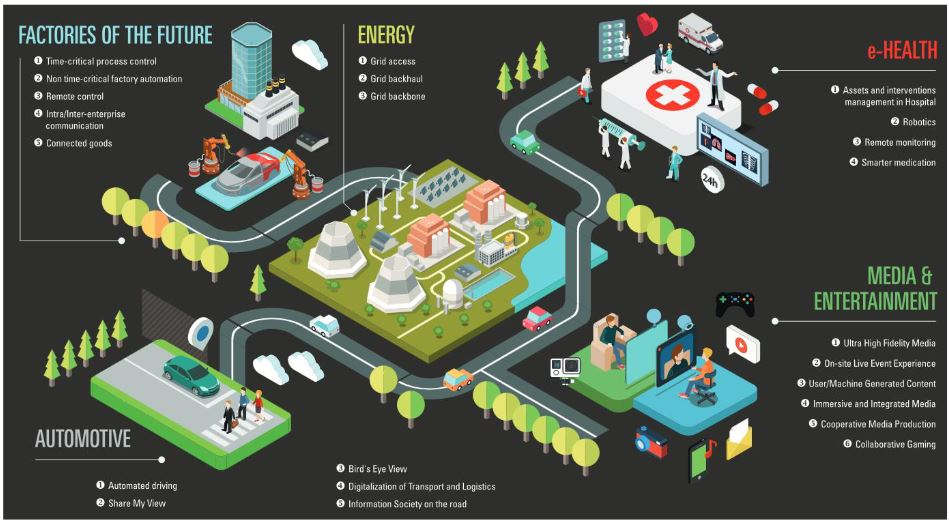The French National Agency for Food, Environmental and Occupational Health Safety (Anses) considers it unlikely that the deployment of 5G will present new health risks. And launches today a public consultation with the scientific community.
Technological developments and the multiplication of digital uses are changing the population’s exposure to electromagnetic fields in the field of radio frequencies, explains ANSES. With the deployment of 5G, new frequency bands are (3.5 GHz band) or will soon be used (26 GHz band). In line with its expertise on radio frequencies and health, and based on the scientific data available to date, ANSES considers it unlikely that the deployment of 5G in the 3.5 GHz frequency band will present new health risks. For the 26 GHz frequency band, the data are not currently sufficient to conclude whether or not there are health effects. As knowledge of the links between exposure and health effects needs to be strengthened, the Anses stresses the need to continue research and to monitor changes in population exposure as the number of antennas increases and the use of networks increases. The Agency is launching a public consultation on April 20, 2021, to gather possible comments from the scientific community and interested stakeholders.
Communication between connected objects
5G: new 3.5 GHz and 26 GHz bands to enable higher data rates and communications between more connected objects
The major difference between 5G and previous generation mobile networks is the much larger amount of data that should be able to be exchanged without network congestion. This new technology aims to foster the development of innovative services and new uses, both for individuals and businesses in multiple areas: virtual reality, transportation, urban connections, industry, telemedicine, online education.
Beyond the exploitation of frequency bands already used by other mobile technologies, 5G now uses the 3.5 GHz band for coverage in large geographical areas, allocated to the four mobile operators at the end of 2020. The 26 GHz band will be added to the network in a few years, particularly for communication between connected objects.
Electromagnetic waves and their effects
Deployment of 5G in the 700 MHz – 2.1 GHz frequency band largely covered by previous Anses assessments
To date, operators have mainly deployed 5G in the 700 MHz – 2.1 GHz band. This band includes frequencies that have been used for several years by the current generations of mobile communication, 2G, 3G and 4G.
Previous work conducted by Anses on the effects of exposure to electromagnetic waves in the radio frequency range indicates that there is currently no evidence of health effects from exposure to sources of electromagnetic fields corresponding to current digital uses. However, the examination of possible effects, such as the development of cancer, impairment of brain function or fertility, continues to be the subject of research and evaluation.
For exposure levels, studies, conducted internationally and by the Agence nationale des fréquences (ANFR), show that they vary little with antennas emitting 3G, 4G or 5G signals.
Deployment of 5G in the 3.5 GHz band: new health risks unlikely
The 5G cell phone network in the frequency band around 3.5 GHz has recently been opened commercially in France. The resulting exposure to electromagnetic fields is not today representative of what it will be in the future.
Investigations by ANSES
Due to the lack of scientific data concerning possible effects at this frequency, the ANSES conducted additional investigations to identify whether exposure to different frequencies of electromagnetic radiation causes the appearance of different biological effects or modulates their intensity. A rigorous extrapolation of the results of scientific studies conducted at different frequencies to draw conclusions on possible effects in the frequency band around 3.5 GHz was not considered feasible by the experts.
Moreover, the available data on exposure, particularly abroad and in studies conducted by the ANFR in connection with experiments, do not suggest, in the current state of knowledge, a significant increase in population exposure.
In view of these elements, the Agency considers it unlikely that the deployment of 5G in the frequency band around 3.5 GHz currently constitutes new health risks.

